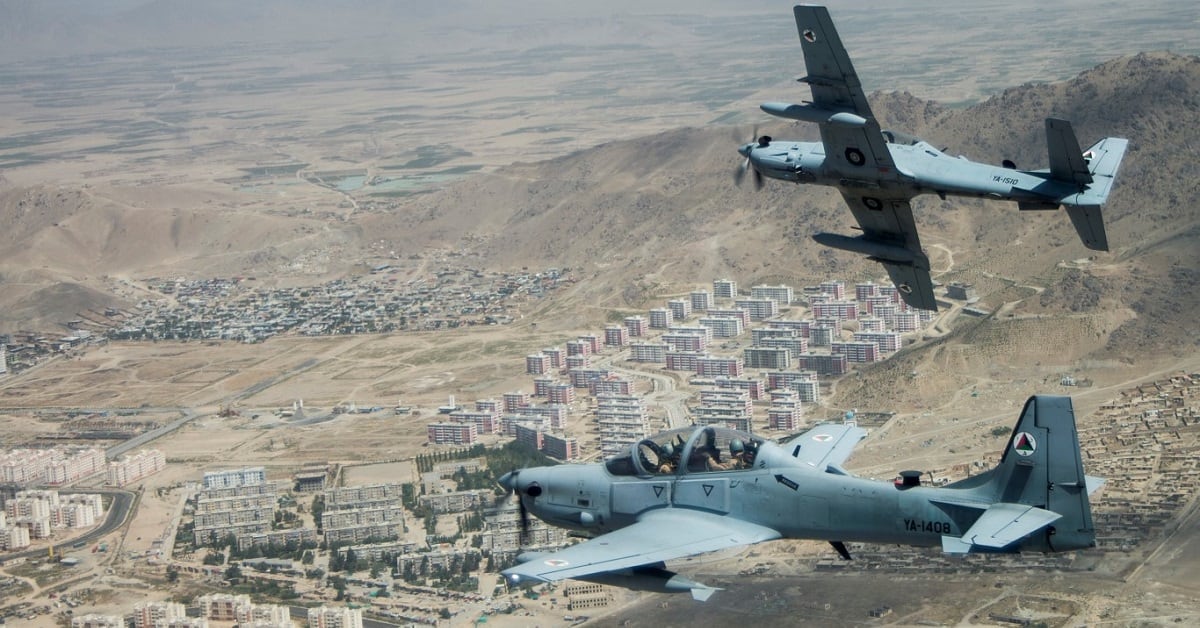ORLANDO, Fla. — The U.S. Air Force’s new T-X jets could be more than just trainers, with aggressor or light-attack missions now on the table for the Boeing-made plane, the head of Air Combat Command said Thursday.
Although buying new T-X trainers to replace the more than 50-year-old T-38 fleet still remains a top priority for that program, the service is beginning to explore whether the T-X could be procured for other uses, Gen. Mike Holmes said at the Air Force Association’s Air Warfare Symposium.
“You could imagine a version of the airframe that could be equipped as a light fighter. You can imagine a version that is equipped as an adversary air-training platform,” he told reporters during a roundtable.
"At the informal level, I have some guys that work for me that are thinking through what the requirement might be for those different versions. When or if that transitions and becomes something more formal will depend on a lot of things,” he said, adding that one of those variables is the budget.
So what T-X variants could the Air Force pursue?
A light-attack T-X
The Air Force still hasn’t made clear its path forward on the light-attack experiment, but leaders have said they want to broaden the effort to include aircraft beyond the turboprop planes, which were the focus of the first experiments. The T-X, or a low-cost jet like it, could have a role, said Holmes, who declined to get into specifics until the fiscal 2020 budget is released with more details.
RELATED

"An airplane like that, like all the airplanes that competed in the T-X category, an airplane like that at that size and cost per flying hour and capability is something I think we should definitely look at as we go forward in the experiment,” he said.
In the first round of light-attack experiments in 2017, the Air Force evaluated one light fighter —Textron’s Scorpion jet — but ultimately eschewed it in favor of turboprops like the A-29 and AT-6.
While the Scorpion brought with it some added capabilities that the turboprops couldn’t replicate — like increased speed and maneuverability, and an internal bay that can host a variety of plug-and-play sensors — the AT-6 and A-29 had two major advantages over the Scorpion. Both are cheaper to buy and already have existing production lines, while the Scorpion has not been purchased by any country.
Boeing’s T-X won’t be grappling with those same challenges. For one, the T-X trainer program gives it a built-in customer dedicated to buying at least 350 planes, covering the cost of setting up a production line and pushing down the price per plane.
Holmes also noted that Boeing incorporated its Black Diamond production initiative into the T-X design process. Black Diamond aims to drastically cut production costs by pulling in new manufacturing techniques and technologies from the company’s commercial side.
“Then if you look at the size of the fleet, if you have more airplanes that are based on a common platform, that almost always brings economies of scale that make it cheaper to operate those airplanes and sustain them for a long time,” Holmes added.
Still, an upgunned T-X may be more expensive from a cost standpoint, and it will have to be something that international militaries are interested in buying — and can afford.
“We don't have any conclusion about whether that would fit for what we're looking for at a cost point,” Holmes acknowledged. “And as [Air Force Chief of Staff Gen. Dave Goldfein] talks about, the primary or at least one of the primary components of anything we're going to look at with light attack is going to be how our partners feel about it.”
An ‘aggressor’ T-X to play the baddie
The Air Force plans to award contracts this year to a number of companies that provide “red air” training that simulates how an adversary fights in air-to-air combat, but the service believes its requirement could grow even larger, necessitating the purchase of a new aggressor plane.
When the T-X program was still a competition between multiple companies, the Air Force downplayed the T-X as an option for a future aggressor aircraft. However, now that a contract has been awarded, the service is taking a look at whether the new trainer could fit requirements, Holmes said at the conference.
The Air Combat Command head spelled out his idea in more depth in a January article in War on the Rocks. The T-X is slated to replace the T-38 Talon, but because flying the Talon is more like operating a 1950s-era fighter than a modern one, only the most very basic fighter tactics can be learned in the seat of that trainer.
A T-X, with its flying and sensor capabilities, is much closer to a modern day fighter, and Holmes hypothesized that much of the training that occurs once a pilot starts flying an F-15, F-16, F-22 or F-35 could actually be done inside the T-X.
It could also take over “some of or all of the adversary aircraft training requirements for nearby fighter units,” he wrote.
“This accelerated seasoning and increased adversary air sortie generation is possible because the T-X’s lower operating cost — presently expected to be less than half the cost per hour of a fourth-generation fighter, and perhaps a fifth the cost of a fifth-generation fighter — allows the pilots to train more for the same, or less, cost.”
Valerie Insinna is Defense News' air warfare reporter. She previously worked the Navy/congressional beats for Defense Daily, which followed almost three years as a staff writer for National Defense Magazine. Prior to that, she worked as an editorial assistant for the Tokyo Shimbun’s Washington bureau.




